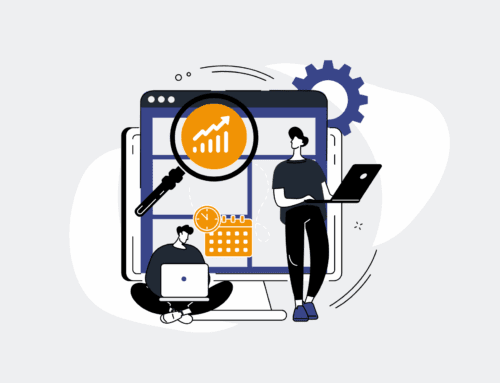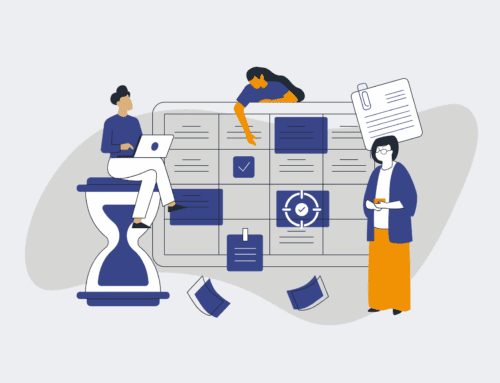A Glossary of Key Terms in Financial and Strategic Justification for Tech Investments
In the dynamic world of HR and recruiting, investing in new technology is not just about adopting the latest tool; it’s about making strategic decisions that drive tangible value. Understanding the financial and strategic concepts behind these investments is crucial for HR leaders and recruiting professionals who need to justify expenditures, secure budgets, and demonstrate the profound impact of their tech stack. This glossary demystifies key terms, offering clear, authoritative definitions tailored to help you articulate the ‘why’ behind your next HR or recruiting automation initiative.
Return on Investment (ROI)
Return on Investment (ROI) is a fundamental metric used to evaluate the profitability of an investment. For HR and recruiting professionals, ROI quantifies the financial benefit gained in relation to the cost of a tech solution. For example, if an applicant tracking system (ATS) costs $50,000 but saves $100,000 in manual labor and reduces time-to-hire, its ROI would be positive. Calculating ROI helps secure stakeholder buy-in by demonstrating a clear financial upside, making it easier to justify expenses for automation tools that streamline onboarding, improve candidate sourcing, or enhance employee engagement platforms. A strong ROI shows that the investment is not merely an expense but a driver of profit and efficiency.
Total Cost of Ownership (TCO)
Total Cost of Ownership (TCO) is a comprehensive financial calculation that includes the initial purchase price of a tech asset plus all direct and indirect costs associated with its operation, maintenance, and eventual disposal over its lifespan. For HR tech, TCO goes beyond the software license fee to include implementation costs, training for HR and recruiting teams, ongoing support fees, necessary hardware upgrades, integration expenses with existing HRIS or payroll systems, and even the opportunity cost of internal resources dedicated to managing the new solution. Understanding TCO is vital for a realistic budget forecast, preventing unforeseen expenses that could derail a project and ensuring that the long-term financial implications of a new recruiting automation platform are fully considered.
Cost-Benefit Analysis (CBA)
A Cost-Benefit Analysis (CBA) is a systematic process for calculating and comparing the benefits and costs of a project or decision. In the context of HR and recruiting tech, a CBA involves identifying all potential costs (e.g., software, training, downtime) and comparing them against all potential benefits (e.g., reduced time-to-hire, improved candidate quality, increased recruiter productivity, lower employee turnover). Benefits can be both tangible (quantifiable monetary savings) and intangible (improved employer brand, better employee morale). Performing a CBA helps HR and recruiting leaders make informed decisions, ensuring that the strategic advantages of an automated system, such as AI-powered candidate screening or a robust HR analytics platform, outweigh the associated expenditures.
Payback Period
The Payback Period is the amount of time it takes for an investment to generate enough net cash flow to recover its initial cost. For HR and recruiting tech investments, a shorter payback period is generally more attractive, as it indicates a quicker return on the initial outlay. For example, if a new HR automation system costs $30,000 and is projected to save the company $5,000 per month in operational expenses, its payback period would be six months. This metric is particularly useful for presenting a clear, easy-to-understand justification to leadership, especially when budget constraints or short-term financial goals are paramount. It offers a tangible timeline for when the investment will start paying for itself.
Strategic Alignment
Strategic Alignment refers to the degree to which an HR tech investment supports and contributes to the overall strategic goals and objectives of the organization. For HR and recruiting professionals, demonstrating strategic alignment means showing how a new automation tool or system directly helps the company achieve its broader mission, whether it’s scaling operations, improving talent acquisition, fostering innovation, or enhancing employee retention. For instance, investing in a learning and development platform aligns with a strategy to build internal capabilities and reduce external hiring. When a tech initiative is strategically aligned, it’s easier to secure funding and executive support, as it’s seen as a vital component of the company’s success rather than an isolated departmental expense.
Efficiency Gains
Efficiency Gains refer to improvements in processes or operations that result in doing more with the same or fewer resources, or doing the same work in less time. In HR and recruiting, automation technology is a primary driver of efficiency gains. Examples include automating resume parsing, streamlining interview scheduling, digitizing onboarding paperwork, or using AI for initial candidate screening. These gains reduce the manual workload for recruiters and HR staff, allowing them to focus on high-value, strategic tasks like candidate engagement, talent strategy, and employee development. Quantifying efficiency gains, such as a 25% reduction in time spent on administrative tasks, provides a powerful justification for tech investments by demonstrating direct operational savings and improved productivity.
Productivity Enhancement
Productivity Enhancement describes the increase in output or effectiveness achieved by individuals or teams, often as a direct result of improved tools, processes, or automation. For HR and recruiting, tech investments like integrated CRM systems, advanced analytics platforms, or AI-driven recruitment tools can significantly enhance productivity. Recruiters might be able to manage more candidates, HR generalists might process requests faster, and hiring managers might make better decisions with richer data. Unlike mere efficiency, productivity enhancement emphasizes not just doing things faster, but doing them better and with greater impact, directly contributing to organizational goals like filling roles quicker with higher quality talent or improving overall workforce performance.
Scalability
Scalability refers to a system’s ability to handle increasing workloads or a growing number of users without a decline in performance. For HR and recruiting functions, especially in high-growth companies, investing in scalable tech is paramount. An HRIS or ATS that can effortlessly manage a rapidly expanding employee base or a surge in job applications ensures that the recruitment and HR processes don’t become bottlenecks. Automation plays a critical role in scalability, allowing teams to process larger volumes of data and execute more tasks without proportionally increasing headcount. Demonstrating that a tech investment supports future growth and can adapt to evolving organizational needs is a powerful strategic justification.
Risk Mitigation
Risk Mitigation involves taking proactive steps to reduce the likelihood or impact of potential negative events. In the realm of HR and recruiting tech, investments can significantly mitigate various risks. For example, an automated compliance management system reduces the risk of legal penalties due to regulatory non-adherence. Secure HR data platforms minimize the risk of data breaches, protecting sensitive employee information. Automation in hiring can reduce unconscious bias, mitigating the risk of discrimination lawsuits and enhancing fairness. By showing how a tech solution safeguards the organization against financial, legal, reputational, or operational risks, HR leaders can present a compelling case for investment that goes beyond mere cost savings, focusing on long-term stability and protection.
Employee Experience (EX)
Employee Experience (EX) encompasses the sum of all interactions an employee has with their employer, from recruitment and onboarding to daily work and eventual offboarding. Investing in HR tech can dramatically enhance EX by streamlining processes, providing intuitive tools, and fostering a supportive environment. Examples include self-service HR portals, personalized learning platforms, or automated feedback systems. A positive EX leads to higher employee satisfaction, engagement, retention, and productivity, all of which have a tangible impact on an organization’s bottom line. While sometimes harder to quantify directly than ROI, the strategic justification for improving EX through technology is strong, as it directly influences talent attraction and long-term organizational success.
Candidate Experience (CX)
Candidate Experience (CX) refers to the perception and feelings a job applicant has about an organization’s recruitment and hiring process. Positive CX is crucial for attracting top talent and maintaining a strong employer brand. HR tech investments, such as user-friendly applicant tracking systems, automated communication workflows, and engaging online assessment tools, can significantly improve CX. A seamless application process, timely updates, and personalized interactions make candidates feel valued, regardless of the outcome. Demonstrating how a tech investment improves CX provides a powerful strategic justification, as it directly impacts an organization’s ability to compete for talent, reduces drop-off rates, and can even turn unsuccessful applicants into future customers or brand advocates.
Opportunity Cost
Opportunity Cost represents the benefits an organization misses out on by choosing one alternative over another. In the context of HR and recruiting tech investments, understanding opportunity cost is vital. If an HR department decides not to invest in a new automation platform, the opportunity cost might include the ongoing expenditure of manual labor, the time-to-hire that remains unoptimized, or the competitive edge lost to organizations leveraging more advanced tools. It’s not just about the cost of the chosen path but also the value foregone by not pursuing the best alternative. Framing an investment decision around avoiding significant opportunity costs can be a compelling argument for embracing transformative HR technology.
Net Present Value (NPV)
Net Present Value (NPV) is a financial metric used to estimate the profitability of a project or investment by calculating the difference between the present value of its future cash inflows and the present value of its cash outflows over a specific period. Unlike simple ROI, NPV considers the “time value of money,” recognizing that a dollar today is worth more than a dollar in the future. For large-scale HR tech investments with long-term benefits, such as a complete HRIS overhaul, NPV provides a more sophisticated and accurate assessment of the investment’s true worth to the organization, helping HR and recruiting leaders justify significant capital expenditures to finance teams by demonstrating long-term value in today’s dollars.
Internal Rate of Return (IRR)
Internal Rate of Return (IRR) is another sophisticated financial metric used to estimate the profitability of potential investments. It is the discount rate that makes the Net Present Value (NPV) of all cash flows from a particular project equal to zero. Essentially, it represents the effective annual return an investment is expected to generate. For HR and recruiting professionals proposing substantial tech investments, understanding IRR can strengthen their financial justification. If the IRR of an HR automation platform exceeds the company’s required rate of return or cost of capital, it indicates a financially attractive project. IRR provides a benchmark for comparing different investment opportunities and is a critical tool for strategic financial planning.
Automation ROI
Automation ROI specifically measures the financial return generated from an investment in automation technology within HR and recruiting. It goes beyond general ROI by focusing on the quantifiable benefits derived from reducing manual tasks, streamlining workflows, and improving data accuracy through automation. This includes savings from reduced labor costs, fewer errors, faster process completion (e.g., onboarding, payroll, candidate screening), and increased capacity for strategic work. For instance, an automated scheduling system for interviews might free up 10 hours of recruiter time per week. Calculating Automation ROI provides a direct and compelling justification for adopting solutions like Make.com or AI-powered tools, proving their tangible impact on operational efficiency and profitability.
If you would like to read more, we recommend this article: The Keap Automation ROI Calculator: From Justification to Transformative HR









